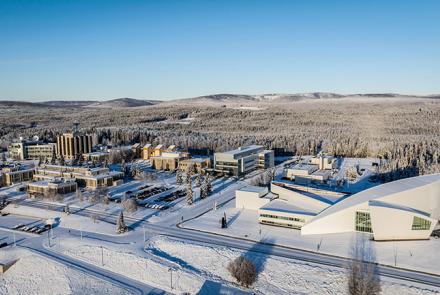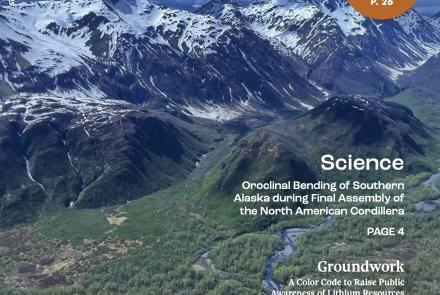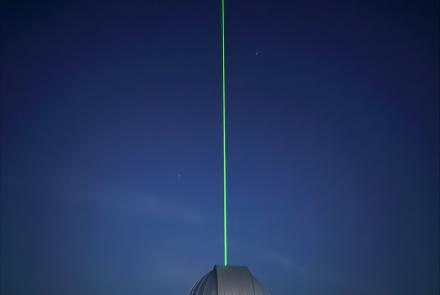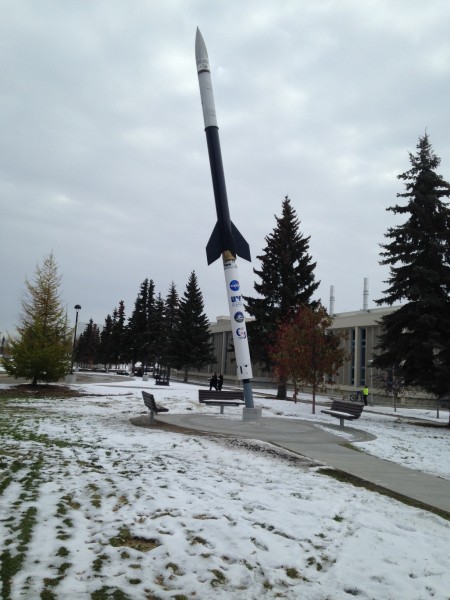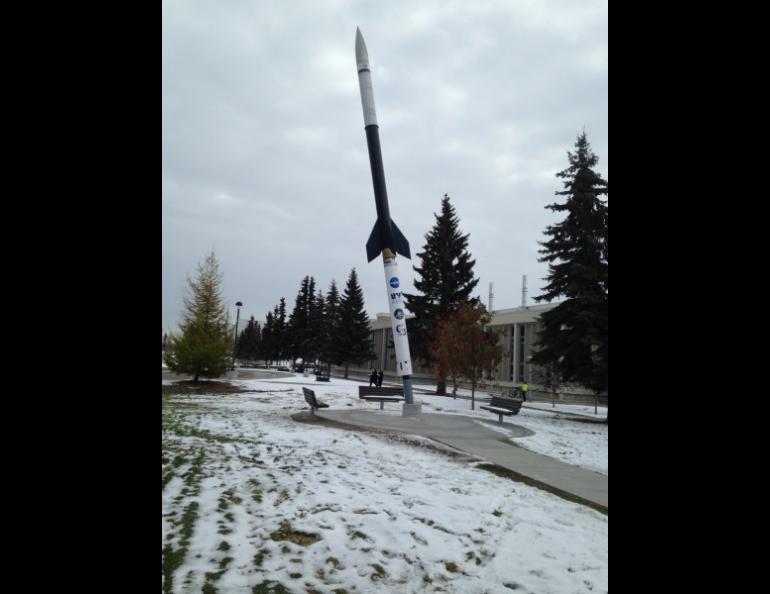
Rocket display adds to UAF’s landscape
A 50-foot Black Brant IX rocket now graces the landscape of the University of Alaska Fairbanks.
A small ribbon-cutting ceremony in honor of the rocket’s installation will take place at 4 p.m. Thursday, Oct. 23, in the Globe Room of the Elvey Building on UAF’s West Ridge.
The rocket is permanently anchored in the center of a seating area on the lawn between the Elvey Building and the Arctic Health Research Building. Rockets like this and much larger are used to study the aurora and the space environment. The Black Brant can lift a 500-pound payload up to 300 miles high for scientific observations.
This rocket has two stages, each containing a rocket motor. Stage one is the white section of the rocket, which drops off first shortly after launch. The second stage is the black portion of the rocket and gives the craft its final boost before it also falls off. The rest of the rocket, the cone and remaining cylinder, contains the payload. Usually the payloads are the sensors and data collection devices. If scientists want to collect the payload equipment, the section will drop to Earth via a parachute, otherwise it falls freely to the ground.
The university has a rocket part collection program, funded by NASA, where people can report locations of parts and collect $500 for smaller pieces or $1,200 for rocket motors.
Bob McCoy, the director of the UAF Geophysical Institute, initiated the rocket installation for campus visitors, students, staff and faculty. He’s launched Black Brant rockets during his research career.
“I want people to see the rocket, go over and ask questions,” McCoy said. “We’re the only university-owned rocket facility out there.”
The Black Brant is favored by arctic scientists and has been launched dozens of times during NASA-funded experiments at UAF’s Poker Flat Research Range.
Poker Flat, part of the UAF Geophysical Institute, has five launch pads and has launched more than 340 sounding rockets since it was established in 1969. Poker Flat also has sent up more than 1,500 smaller meteorological rockets.
Rocket research at Poker Flat usually is conducted in January or February of the year. In the 2015 season, Poker Flat will host five rocket launches.
ON THE WEB: www.gi.alaska.edu or www.pfrr.alaska.edu.
DC/10-20-14/089-15
Sue Mitchell, University of Alaska Fairbanks Geophysical Institute, 907-474-5823, sue.mitchell@alaska.edu

